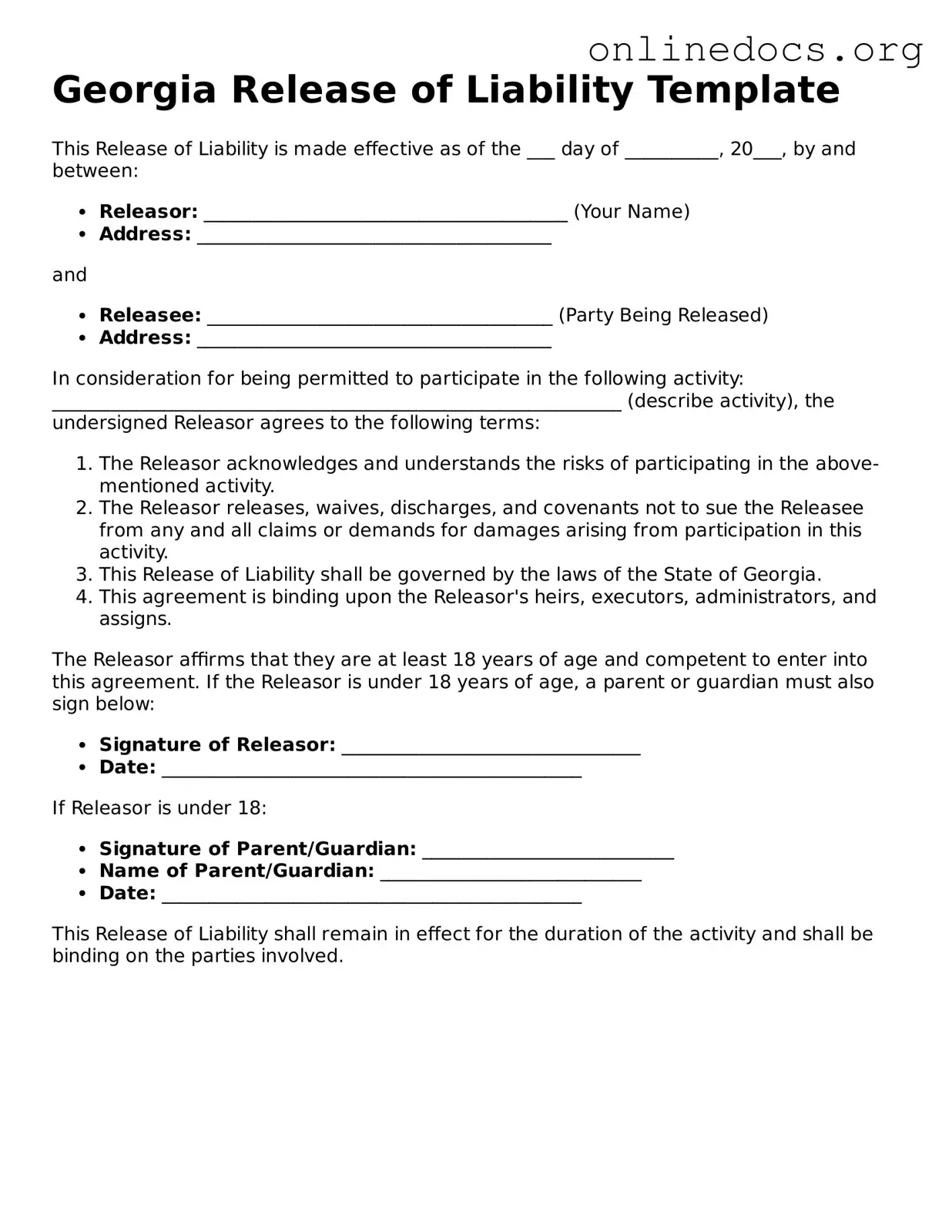The Georgia Release of Liability form is similar to a Waiver of Liability. Both documents serve to protect an individual or organization from legal claims resulting from injuries or damages. By signing a Waiver of Liability, participants acknowledge the risks involved in an activity and agree not to hold the organizer responsible. This form is often used in sports and recreational activities, where the risk of injury is present.
Another similar document is the Indemnity Agreement. This agreement goes a step further by not only releasing one party from liability but also requiring the other party to compensate for any losses or damages incurred. It is commonly used in business transactions and construction projects, where one party may need to protect themselves from potential claims arising from the actions of another party.
The Consent to Participate form is also akin to the Georgia Release of Liability. This document informs participants of the risks associated with an activity and requires their consent before engaging in it. While it may not provide as comprehensive a release as the liability form, it still serves to protect the organizer by ensuring that participants are aware of the potential dangers involved.
The discussion around various liability forms often brings up the importance of documentation in mitigating risks associated with vehicle transfers and activities. For instance, the Vehicle Release of Liability form, vital for ensuring that the previous owner of a vehicle is no longer liable post-sale, can be thoroughly explored on websites such as UsaLawDocs.com. Understanding such documents is essential for both parties to navigate their legal responsibilities effectively and to communicate the transfer of risk appropriately.
A Medical Release form shares similarities with the Georgia Release of Liability in that it allows individuals to authorize the sharing of their medical information. This form is often used in sports and recreational settings, ensuring that emergency personnel have access to necessary medical history in case of an injury, thereby helping to mitigate liability for the organization.
The Hold Harmless Agreement is closely related as well. This document requires one party to accept responsibility for any damages or injuries that may occur, thereby protecting the other party from legal claims. It is often used in contracts where one party may be exposed to risks associated with the activities of another, such as in rental agreements or service contracts.
A Participant Agreement is another document that resembles the Georgia Release of Liability. This agreement outlines the terms and conditions under which a participant agrees to engage in an activity. It often includes a release of liability clause, thereby protecting the organizer from claims resulting from participation in the activity.
The Rental Agreement can also be similar, particularly when it includes liability clauses. This document outlines the terms of renting a property or equipment and often includes provisions that limit the landlord's or owner's liability for injuries that may occur on the premises or due to the use of the rented items.
The Event Liability Waiver is another related document. It is specifically designed for events, protecting organizers from claims related to injuries or damages that occur during the event. Participants must sign this waiver to acknowledge their understanding of the risks involved, similar to the Georgia Release of Liability form.
A Volunteer Release form is also comparable. This document is used when individuals volunteer for an organization, acknowledging the risks associated with their volunteer work and releasing the organization from liability. It ensures that volunteers understand the potential dangers and agree not to hold the organization responsible for any injuries that may occur.
Lastly, the Non-Disclosure Agreement (NDA) can bear similarities in terms of protecting parties from liability, albeit in a different context. An NDA safeguards confidential information shared between parties, preventing legal claims related to the misuse of that information. While it does not address physical injuries, it still serves to limit liability in the realm of intellectual property and business dealings.
